-Acute Rheumatic Fever-
-Acute Rheumatic Fever is a sequelae that occurs two to four weeks after Group A Strep Pharyngitis
-Acute Rheumatic Fever may consist of arthritis, carditis, chorea, erythema marginatum and subcutaneous nodules
-Acute Rheumatic Fever may also cause damage to cardiac valves that may lead to cardiac problems
-Acute Rheumatic Fever occurs most commonly between the ages of 5-15 years, rarely in the first 3 years of life as well as adults
-Jones Criteria defines the diagnosis of Acute Rheumatic Fever (ARF) via major criteria and minor criteria
-Major Criteria for ARF-
1. Migratory Arthritis (mainly large joints)
2. Carditis and Valvulitis
3. CNS Involvement (Sydenham Chorea)
4. Erythema Marginatum
5. Subcutaneous Nodules
-Minor Criteria for ARF-
1. Fever
2. Prolonged PR interval
3. Elevated ESR or CRP
4. Arthralgia
-Two major criteria, or one major and two minor criteria is considered diagnostic for ARF
-Usually occurs 2-4 weeks follow a Group A Strep infection
-Rheumatic heart disease is the most severe sequelae of ARF. It usually occurs 10-20 years following the illness
-ARF is the most common cause of acquired valvular heart disease in the world
-Mitral valve is usually more involved than the aortic valve
-The treatment of ARF involves anti-inflammatory management, heart failure management, and anti-mircobials
-Patients should be treated for strep pharyngitis rather or not pharyngitis is present. Patients can be treated with amoxicillin, penicillin, penicillin G, cephalexin, or azithromycin, or biaxin
-Patients with cardiomegaly, CHF, or third degree heart block should be treated with therapy for heart failure. Patients with third degree heart block require pacing
-ASA 80-100 mg/kg per day in children and 4-8 grams per day in adults in the major anti-inflammaotry agent used
-Botulism-
-Botulism is caused by the bacteria Clostridium Botulinum
-Botulism is a rare life threatening infection that causes a neurologic paralysis syndrome from a neurotoxic the bacteria secretes
-There are subtypes of botulism A-H
-G and H types of botulism cause human disease
- C and D types of botulism cause disease in cattle, ducks, and chickens
-The botulinum bacteria when it is in the body releases a neurotoxin that spreads widely to the vascular system and binds to receptors on the synapses at the neuromuscular junction
-Once the toxin makes it into the cytoplasm it disrupts the stimulation of acetylcholine release
-Botulism toxin is the most potent bacterial toxin and the most potent poison
-The botulism toxin is inactivated by chlorinated water after about 20 minutes of exposure and fresh water after 3-6 days
-The botulism toxin is resistant to inactivation by gastric acidity and the gastrointestinal digestive enzymes
-The botulism toxin has no smell or taste
-Clinical features of botulism are: absence of fever, symmetric neurologic deficits, the patient remains responsive, normal slow heart rate and normal blood pressure, no sensory deficits except blurred vision
-Patients with suspected botulism should be hospitalized and monitored for signs of respiratory failure
-Equine serum heptavalent botulism toxin is used to treat children greater than 1 year of age and adults
-Human derived botulism immune globulin is used for infants less than one year of age
-Penicillin G or Flagyl is IV recommended for those who have wound botulism
-Chlamydia-
-Chlamydia and Chlamydophilia species are obligate intracellular bacteria
-Chlamydia trachomatis is the most common cause of genital tract and ocular infections in the world
-Chlamydophilia psittaci causes atypical pneumonia
-Chlamydia pneumonia presents similar to other pneumonias. Usually gradual onset of symptoms, pharyngitis, sinusitis, cough and fever. Chest x ray usually reveals one patchy area of subsegmental infiltrate
-Antibiotic choices for chlamydia pneumonia include azithromycin, clarithromycin, and doxycycline
-Chlamydia trachomatis is the most common cause of sexually transmitted infections
-The majority of affected persons are symptomatic and an ongoing reservoir for the infection
-For infants born via vaginal delivery, chlamydia pneumonia or chlamydia conjunctivitis can occur
-Up to 85 percent of women infected at the cervix with chlamydia have no signs of symptoms
-Routine annual screening is recommended for sexually active women
-Untreated cervical infection can ascend to causes PID and lead to infertility and chronic pain
-Symptoms of chlamydia include dysuria, purulent vaginal discharge and pelvic pain
-Fitzhugh Curtis syndrome is when a chlamydia infection develops into perihepatitis and liver capsule and adjacent peritoneal surfaces
-Complete treatment should be targeted gonorrhea and chlamydia both. Chlamydia can be treated with 1000 mg of zithromax or doxycycline 100 mg BID for 10 days. Gonorrhea is treated with rocephin 250 mg IM.
-The patient should be counseled on HIV testing and treatment of sexual partners. Should also abstain from intercourse for 14 days after partner (s) treated
-Cholera-
-Cholera presents as a secretory diarrhea illness caused by a toxin of strains of gram negative Vibrio cholera
-Cholera presents as profound fluid and electrolyte losses in the stool and rapid development of hypovolemic shock.
-Aggressive fluid replacement reduces the mortality from cholera dramatically
-This organism thrives in brackish aquatic environments that serves as media for human infection
-Cholera can be cultured in stool and rectal swabs using selective media and biochemical tests
-Cholera primarily effects resource limited countries where this inadequate access to clean viable water sources
-Transmission of Cholera is ingestion of food or water of contaminated water sources usually
-The spectrum of cholera severity of illness ranges from asymptomatic colonization to severe diarrhea and hypovolemic loss
-The characteristic diarrhea is profuse "rice water" stool
-Antibiotics are considered adjunctive with treatment and may be of particular use in epidemic settings. Doxycycline, zithromax, erythromycin, or cipro are recommended
-The WHO recommends oral cholera vaccines for those in endemic areas
-Diphtheria-
-Botulism is a rare life threatening infection that causes a neurologic paralysis syndrome from a neurotoxic the bacteria secretes
-There are subtypes of botulism A-H
-G and H types of botulism cause human disease
- C and D types of botulism cause disease in cattle, ducks, and chickens
-The botulinum bacteria when it is in the body releases a neurotoxin that spreads widely to the vascular system and binds to receptors on the synapses at the neuromuscular junction
-Once the toxin makes it into the cytoplasm it disrupts the stimulation of acetylcholine release
-Botulism toxin is the most potent bacterial toxin and the most potent poison
-The botulism toxin is inactivated by chlorinated water after about 20 minutes of exposure and fresh water after 3-6 days
-The botulism toxin is resistant to inactivation by gastric acidity and the gastrointestinal digestive enzymes
-The botulism toxin has no smell or taste
-Clinical features of botulism are: absence of fever, symmetric neurologic deficits, the patient remains responsive, normal slow heart rate and normal blood pressure, no sensory deficits except blurred vision
-Patients with suspected botulism should be hospitalized and monitored for signs of respiratory failure
-Equine serum heptavalent botulism toxin is used to treat children greater than 1 year of age and adults
-Human derived botulism immune globulin is used for infants less than one year of age
-Penicillin G or Flagyl is IV recommended for those who have wound botulism
-Chlamydia-
-Chlamydia and Chlamydophilia species are obligate intracellular bacteria
-Chlamydia trachomatis is the most common cause of genital tract and ocular infections in the world
-Chlamydophilia psittaci causes atypical pneumonia
-Chlamydia pneumonia presents similar to other pneumonias. Usually gradual onset of symptoms, pharyngitis, sinusitis, cough and fever. Chest x ray usually reveals one patchy area of subsegmental infiltrate
-Antibiotic choices for chlamydia pneumonia include azithromycin, clarithromycin, and doxycycline
-Chlamydia trachomatis is the most common cause of sexually transmitted infections
-The majority of affected persons are symptomatic and an ongoing reservoir for the infection
-For infants born via vaginal delivery, chlamydia pneumonia or chlamydia conjunctivitis can occur
-Up to 85 percent of women infected at the cervix with chlamydia have no signs of symptoms
-Routine annual screening is recommended for sexually active women
-Untreated cervical infection can ascend to causes PID and lead to infertility and chronic pain
-Symptoms of chlamydia include dysuria, purulent vaginal discharge and pelvic pain
-Fitzhugh Curtis syndrome is when a chlamydia infection develops into perihepatitis and liver capsule and adjacent peritoneal surfaces
-Complete treatment should be targeted gonorrhea and chlamydia both. Chlamydia can be treated with 1000 mg of zithromax or doxycycline 100 mg BID for 10 days. Gonorrhea is treated with rocephin 250 mg IM.
-The patient should be counseled on HIV testing and treatment of sexual partners. Should also abstain from intercourse for 14 days after partner (s) treated
-Cholera-
-Cholera presents as a secretory diarrhea illness caused by a toxin of strains of gram negative Vibrio cholera
-Cholera presents as profound fluid and electrolyte losses in the stool and rapid development of hypovolemic shock.
-Aggressive fluid replacement reduces the mortality from cholera dramatically
-This organism thrives in brackish aquatic environments that serves as media for human infection
-Cholera can be cultured in stool and rectal swabs using selective media and biochemical tests
-Cholera primarily effects resource limited countries where this inadequate access to clean viable water sources
-Transmission of Cholera is ingestion of food or water of contaminated water sources usually
-The spectrum of cholera severity of illness ranges from asymptomatic colonization to severe diarrhea and hypovolemic loss
-The characteristic diarrhea is profuse "rice water" stool
-Antibiotics are considered adjunctive with treatment and may be of particular use in epidemic settings. Doxycycline, zithromax, erythromycin, or cipro are recommended
-The WHO recommends oral cholera vaccines for those in endemic areas
-Diphtheria-
-Diphtheria is caused by Corynebacteria Diphtheriae which is a gram positive bacillus
-Diphtheria can manifest itself as a respiratory illness, skin pathology, or just an asymptomatic carrier
-Diphtheria means leather that refers to a tough pharyngeal membrane which is the hallmark of the disease
-Symptoms of diphtheria are sore throat, malaise, cervical lymphadenopathy, and low grade fever
-With diphtheria you can see mild pharyngeal erythema and white exudate that coalesce to form a gray pseudomonas that bleeds with scraping
-With diphtheria can also see adherent pharyngeal, palate, and nasal membranes, systemic toxicity, hoarseness, stridor, and serosanguineous nasal discharge
-Confirmation of diagnosis comes from a culture of respiratory tract secretions or cutaneous lesions, and a positive toxic assay
-Treatment includes the diphtheria anti-toxin and antibiotics such as erythromycin or penicillin G
-Gonococcal Infections-
-Gonococcal infections can include urethra, cervix, epididymis, conjunctiva, pharynx, and rectum
-If infections are not considered from ascending spread of the pathogen to other organs or the patient is not septic it is considered an uncomplicated infection
-Studies have demonstrated that is a confection with chlamydia up to 50 percent of the time
-Rocephin 250 mg IM times one dose is the treatment of choice
-Alternative regimen for gonorrhea is ceftizoxime 500 mg IM or cefoxitin 2 grams times one dose
-Alternative regimen for those with a cephalosporin intolerance is zithromax 2 grams PO. This is not recommended because of high incidence of GI upset
-Gonococcal pharyngitis should be treated with with rocephin 250 mg IM
-Gonococcal conjunctivitis can be treated with 1 gram of Rocephin IM
-Epididymitis is most likely caused by gonorrhea or chlamydia if the patient is less than 35. Rocephin 250 mg IM times one dose with Doxycycline 100 mg BID for 10 days for these patients.
-Gonococcal proctitis should be treated with rocephin 250 mg IM times one dose with doxycycline 100 mg BID for 7 days
-Sexual activity should be avoided for 7 days after partner(s) are treated
-Exposed partners should also be treated
-Patients with disseminated gonococcal infection present with one of two syndromes. Purulent arthritis without associated skin lesions or a triad of tenosynovitis, dermatitis, and polyarthritis without purulent arthritis
-Purulent arthritis needs to have the joint aspirated and cultured. No studies have been done. In general cefixime should be started 400 mg BID after parenteral therapy for 7 days
-alternatively isolates of gonorrhea have been susceptible to cipro 500 BID, doxycycline 100 mg BID, or amoxicillin 500 mg four times a day.
-Salmonellosis-
-Salmonella consists of two species: Salmonella enterica, and Salmonella bongori
-In the clinical setting, gastroenteritis from Salmonella may be clinically similar to gastroenteritis caused by similar organisms
-The cardinal symptoms of Salmonella are nausea, vomiting, fever, diarrhea and abdominal cramping approximately 8-72 hours after eating contaminated food or water
-Salmonella may be mild or even no symptoms
-A small percentage of individuals with Salmonella will develop sepsis as a result of Salmonella infection.
-Sepsis from Salmonella can lead to endocarditis, osteomyelitis, or mycotic aneurysm
-Most cases of Salmonella gastroenteritis resolve without treatment. Fever usually resolves within 48 hours and diarrhea lasts 4-10 days.
-Diarrhea over 10 days should provoke a workup for other diagnoses
-Positive stool cultures should be treated in symptomatic patients, preemptive treatment in immunosuppressed hosts, food handlers and healthcare workers, and asymptomatic carriage of nontyphoidal Salmonella
-Replacement of electrolytes is essential in symptomatic patients
-Treatment should be considered in patients with more than 9-10 stools per day, high fever, or a need for hospitalization
-The presence of blood in diarrhea does not mean the patient needs antibiotics
-As a rule of thumb, the potential for improvement of severe illness and prevention of complications appear to outright the small risks of antibiotic treatment
-Appropriate treatment for Salmonella include Cipro, Levaquin, Bactrim Rocephin, Amoxicillin, or Tetracycline
-Preemptive treatment is indicated for patients with organ transplants, cancer, AIDS, sickle cell, or patients receiving corticosteroids or immunosuppressants
-Antibiotic treatment is appropriate for pregnant women when they have fever, severe disease, sepsis, or they are near term
-Shigellosis-
-Shigella is a non motile, aerobic gram negative bacilli
-The four species of Shigella include: Shigella dysenteriae, Shigella flexneri, Shigella boydii, and Shigella sonnei
-Shigella survives transit through stomach acid and multiply in the small intestine. Shigella subsequently pass into the colon where they invade the colonic cells
-Shigella transmission predominately occurs via contaminated food and water and person to person contact
-Symptoms of shigella include fever, abdominal cramping, mucoid diarrhea, bloody diarrhea, watery diarrhea, and vomiting.
-It is important to emphasize, shigella is a disease of lower GI tract
-Incubation range for Shigella is 1-7 days, with a mean of 3 days
-Stool frequency is 8-10 stools per day, but can be up to 100 per day
-Intestinal complications of Shigella infection include: proctitis, rectal prolapse, toxic megacolon, intestinal obstruction, and colonic perforation
-Systemic complications of Shigella infection include: dehydration, electrolyte disturbance, sepsis, seizures, reactive arthritis, hemolytic uremic syndrome, and leukamoid reaction (WBC of 50,000 or more)
-Diagnosis should be suspect with frequent small volume, blood stools, abdominal cramping, and tenesmus
-Definitive diagnosis requires a stool culture
-For public health reasons, most clinicians favor antibiotic therapy.
-Empiric antibiotics are indicated in severely ill patients with diarrhea when hospitalization is required
-Other indications of empiric therapy pending cultures include malnourished individuals, HIV patients, food preparers, health care workers and day care workers
-The treatment of choice for Shigella in descending order includes levaquin, cipro, zithromax, bactrim, and rocephin for 3-5 days
-Duration of therapy is short due to low count of organism necessary to cause disease
-Tetanus-
-Tetanus is a nervous system disorder that causes muscle spasms because of toxin produced by an anaerobic bacteria called Clostridium tetani
-The term "lockjaw" now referred to a trismus is one of the cardinal features of tetanus which is painful, intense spasms of the masseter muscles
-Tetanus can present in one of four clinical patterns: neonatal, localized, generalized, and cephalic
-Tetanus is rare in the developed worlds because of vaccination
-Predisposing factors include a penetrating injury resulting from inoculation of spores, or infection with other bacteria, devitalized tissue, a foreign body, and localized ischemia
-Tetanus can develop in different clinical situations such as: neonates from infection of the umbilical stump, obstetrical patients after septic abortions, post surgical patients, patients with dental infections, diabetic patients with infected extremity ulcers, and patients who inject illicit or contaminated drugs
-Incubation periods can be one day to several months
-The most common and severe clinical form of tetanus is generalized tetanus
-Classic clinical findings of tetanus include: stiff neck, opisthotonus, risus sardonicus (smile), a board like rigid abdomen, periods of apnea and upper airway obstruction due to vise like contraction of the thoracic muscles
-During generalized tetany spasms, patients clench their fists, arch their back, and flex and abduct their arms while extending their legs
-Localized tetanus occur with spastic muscle contractions in one extremity or body region
-Cephalic tetanus only involves the cranial nerves after injuries to head and neck
Neonatal tetanus occurs in infants 3-21 days old. It is manifested by rigidity spasms, trismus, inability to suck, and seizures. Can result from aseptic techniques in managing the umbilical stump of mothers that are poorly immunized
-The goals of treatment of tetanus include: halting toxin production, airway management, neutralization of the unbound toxin, control of muscle spasm, management of dysautonomia, and generalized supportive management
-Wound management is essential for debridement of contaminated tissue and necrotic tissue. Antibiotics should include flagyl, but penicillin G is an effective alternative
-Since tetanus toxin is irreversibly bound to tissues, the unbound toxin is the only available for neutralization
-The human tetanus immunoglobulin (HTIG) should be given and infiltrated around the wound and administered at different sites than tetanus toxoid
-All patients with an acute illness should receive tetanus toxoid in 3 doses spaced two weeks apart
-Several medications have been used to produce adrenergic blockade and suppress autonomic hyperactivity. Magnesium sulfate and labetolol have been used
-Tetanus Prophylaxis-
1. Patients who received less than 3 doses of tetanus toxoid should be given the tetanus toxoid and tetanus immunoglobulin
2. Patients who have received 3 doses should just receive tetanus toxoid (recommended in 10 year intervals)
-Diphtheria can manifest itself as a respiratory illness, skin pathology, or just an asymptomatic carrier
-Diphtheria means leather that refers to a tough pharyngeal membrane which is the hallmark of the disease
-Symptoms of diphtheria are sore throat, malaise, cervical lymphadenopathy, and low grade fever
-With diphtheria you can see mild pharyngeal erythema and white exudate that coalesce to form a gray pseudomonas that bleeds with scraping
-With diphtheria can also see adherent pharyngeal, palate, and nasal membranes, systemic toxicity, hoarseness, stridor, and serosanguineous nasal discharge
-Confirmation of diagnosis comes from a culture of respiratory tract secretions or cutaneous lesions, and a positive toxic assay
-Treatment includes the diphtheria anti-toxin and antibiotics such as erythromycin or penicillin G
-Gonococcal Infections-
-Gonococcal infections can include urethra, cervix, epididymis, conjunctiva, pharynx, and rectum
-If infections are not considered from ascending spread of the pathogen to other organs or the patient is not septic it is considered an uncomplicated infection
-Studies have demonstrated that is a confection with chlamydia up to 50 percent of the time
-Rocephin 250 mg IM times one dose is the treatment of choice
-Alternative regimen for gonorrhea is ceftizoxime 500 mg IM or cefoxitin 2 grams times one dose
-Alternative regimen for those with a cephalosporin intolerance is zithromax 2 grams PO. This is not recommended because of high incidence of GI upset
-Gonococcal pharyngitis should be treated with with rocephin 250 mg IM
-Gonococcal conjunctivitis can be treated with 1 gram of Rocephin IM
-Epididymitis is most likely caused by gonorrhea or chlamydia if the patient is less than 35. Rocephin 250 mg IM times one dose with Doxycycline 100 mg BID for 10 days for these patients.
-Gonococcal proctitis should be treated with rocephin 250 mg IM times one dose with doxycycline 100 mg BID for 7 days
-Sexual activity should be avoided for 7 days after partner(s) are treated
-Exposed partners should also be treated
-Patients with disseminated gonococcal infection present with one of two syndromes. Purulent arthritis without associated skin lesions or a triad of tenosynovitis, dermatitis, and polyarthritis without purulent arthritis
-Purulent arthritis needs to have the joint aspirated and cultured. No studies have been done. In general cefixime should be started 400 mg BID after parenteral therapy for 7 days
-alternatively isolates of gonorrhea have been susceptible to cipro 500 BID, doxycycline 100 mg BID, or amoxicillin 500 mg four times a day.
-Salmonellosis-
-Salmonella consists of two species: Salmonella enterica, and Salmonella bongori
-In the clinical setting, gastroenteritis from Salmonella may be clinically similar to gastroenteritis caused by similar organisms
-The cardinal symptoms of Salmonella are nausea, vomiting, fever, diarrhea and abdominal cramping approximately 8-72 hours after eating contaminated food or water
-Salmonella may be mild or even no symptoms
-A small percentage of individuals with Salmonella will develop sepsis as a result of Salmonella infection.
-Sepsis from Salmonella can lead to endocarditis, osteomyelitis, or mycotic aneurysm
-Most cases of Salmonella gastroenteritis resolve without treatment. Fever usually resolves within 48 hours and diarrhea lasts 4-10 days.
-Diarrhea over 10 days should provoke a workup for other diagnoses
-Positive stool cultures should be treated in symptomatic patients, preemptive treatment in immunosuppressed hosts, food handlers and healthcare workers, and asymptomatic carriage of nontyphoidal Salmonella
-Replacement of electrolytes is essential in symptomatic patients
-Treatment should be considered in patients with more than 9-10 stools per day, high fever, or a need for hospitalization
-The presence of blood in diarrhea does not mean the patient needs antibiotics
-As a rule of thumb, the potential for improvement of severe illness and prevention of complications appear to outright the small risks of antibiotic treatment
-Appropriate treatment for Salmonella include Cipro, Levaquin, Bactrim Rocephin, Amoxicillin, or Tetracycline
-Preemptive treatment is indicated for patients with organ transplants, cancer, AIDS, sickle cell, or patients receiving corticosteroids or immunosuppressants
-Antibiotic treatment is appropriate for pregnant women when they have fever, severe disease, sepsis, or they are near term
-Shigellosis-
-Shigella is a non motile, aerobic gram negative bacilli
-The four species of Shigella include: Shigella dysenteriae, Shigella flexneri, Shigella boydii, and Shigella sonnei
-Shigella survives transit through stomach acid and multiply in the small intestine. Shigella subsequently pass into the colon where they invade the colonic cells
-Shigella transmission predominately occurs via contaminated food and water and person to person contact
-Symptoms of shigella include fever, abdominal cramping, mucoid diarrhea, bloody diarrhea, watery diarrhea, and vomiting.
-It is important to emphasize, shigella is a disease of lower GI tract
-Incubation range for Shigella is 1-7 days, with a mean of 3 days
-Stool frequency is 8-10 stools per day, but can be up to 100 per day
-Intestinal complications of Shigella infection include: proctitis, rectal prolapse, toxic megacolon, intestinal obstruction, and colonic perforation
-Systemic complications of Shigella infection include: dehydration, electrolyte disturbance, sepsis, seizures, reactive arthritis, hemolytic uremic syndrome, and leukamoid reaction (WBC of 50,000 or more)
-Diagnosis should be suspect with frequent small volume, blood stools, abdominal cramping, and tenesmus
-Definitive diagnosis requires a stool culture
-For public health reasons, most clinicians favor antibiotic therapy.
-Empiric antibiotics are indicated in severely ill patients with diarrhea when hospitalization is required
-Other indications of empiric therapy pending cultures include malnourished individuals, HIV patients, food preparers, health care workers and day care workers
-The treatment of choice for Shigella in descending order includes levaquin, cipro, zithromax, bactrim, and rocephin for 3-5 days
-Duration of therapy is short due to low count of organism necessary to cause disease
-Tetanus-
-Tetanus is a nervous system disorder that causes muscle spasms because of toxin produced by an anaerobic bacteria called Clostridium tetani
-The term "lockjaw" now referred to a trismus is one of the cardinal features of tetanus which is painful, intense spasms of the masseter muscles
-Tetanus can present in one of four clinical patterns: neonatal, localized, generalized, and cephalic
-Tetanus is rare in the developed worlds because of vaccination
-Predisposing factors include a penetrating injury resulting from inoculation of spores, or infection with other bacteria, devitalized tissue, a foreign body, and localized ischemia
-Tetanus can develop in different clinical situations such as: neonates from infection of the umbilical stump, obstetrical patients after septic abortions, post surgical patients, patients with dental infections, diabetic patients with infected extremity ulcers, and patients who inject illicit or contaminated drugs
-Incubation periods can be one day to several months
-The most common and severe clinical form of tetanus is generalized tetanus
-Classic clinical findings of tetanus include: stiff neck, opisthotonus, risus sardonicus (smile), a board like rigid abdomen, periods of apnea and upper airway obstruction due to vise like contraction of the thoracic muscles
-During generalized tetany spasms, patients clench their fists, arch their back, and flex and abduct their arms while extending their legs
-Localized tetanus occur with spastic muscle contractions in one extremity or body region
-Cephalic tetanus only involves the cranial nerves after injuries to head and neck
Neonatal tetanus occurs in infants 3-21 days old. It is manifested by rigidity spasms, trismus, inability to suck, and seizures. Can result from aseptic techniques in managing the umbilical stump of mothers that are poorly immunized
-The goals of treatment of tetanus include: halting toxin production, airway management, neutralization of the unbound toxin, control of muscle spasm, management of dysautonomia, and generalized supportive management
-Wound management is essential for debridement of contaminated tissue and necrotic tissue. Antibiotics should include flagyl, but penicillin G is an effective alternative
-Since tetanus toxin is irreversibly bound to tissues, the unbound toxin is the only available for neutralization
-The human tetanus immunoglobulin (HTIG) should be given and infiltrated around the wound and administered at different sites than tetanus toxoid
-All patients with an acute illness should receive tetanus toxoid in 3 doses spaced two weeks apart
-Several medications have been used to produce adrenergic blockade and suppress autonomic hyperactivity. Magnesium sulfate and labetolol have been used
-Tetanus Prophylaxis-
1. Patients who received less than 3 doses of tetanus toxoid should be given the tetanus toxoid and tetanus immunoglobulin
2. Patients who have received 3 doses should just receive tetanus toxoid (recommended in 10 year intervals)
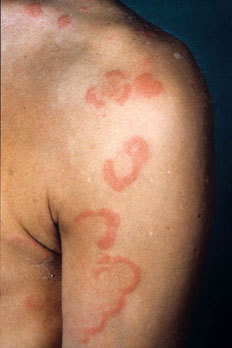


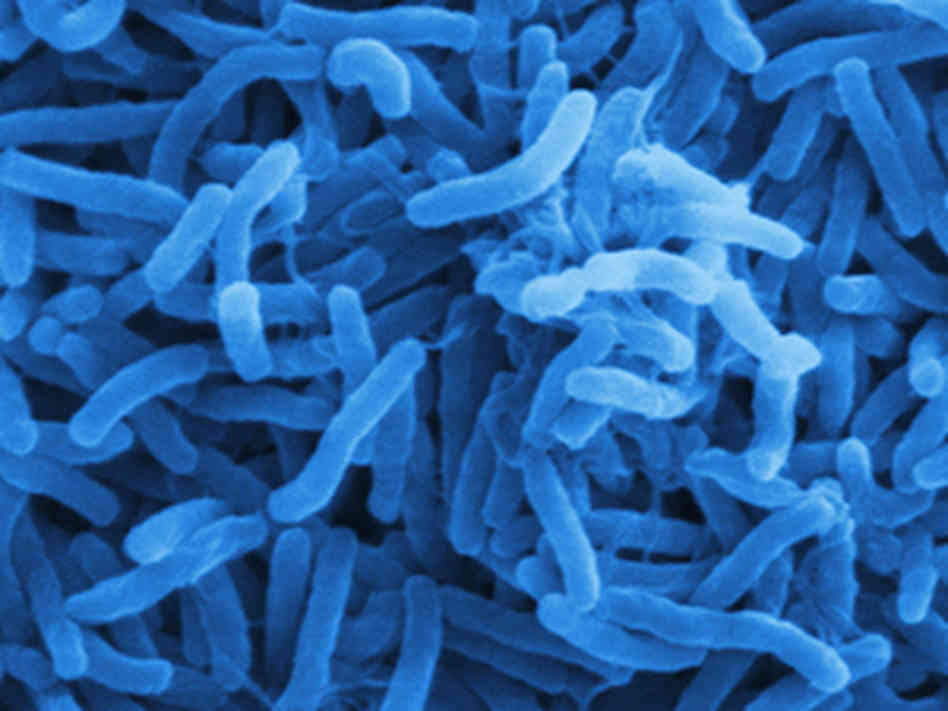
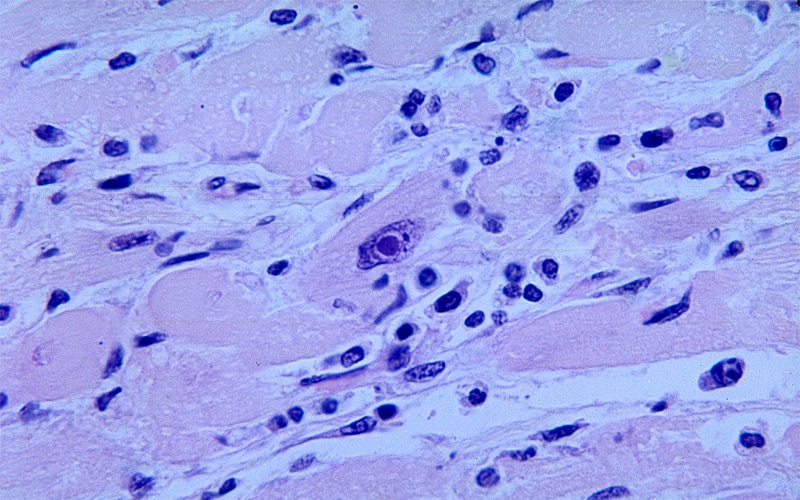


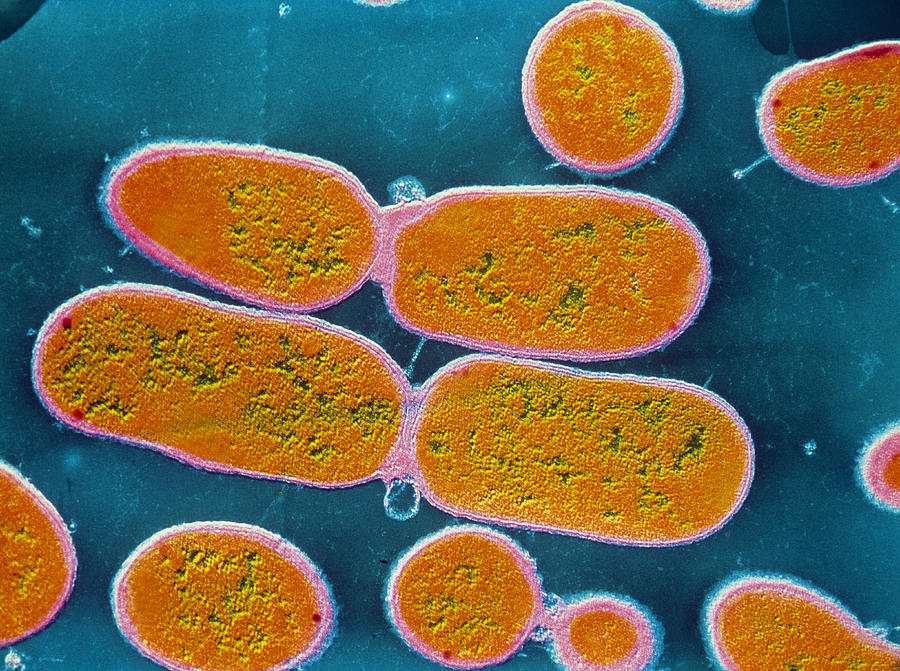
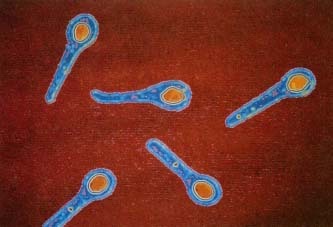
Wow, thats surely exquisite to recognize the fact and I am positive you will also love my article written here is apple a fruit approximately Hope so you will love to provide me a go-to.
ReplyDeleteThis comment has been removed by the author.
ReplyDeleteI'm here to give my testimony how I was cured from HIV, I contacted my HIV via blade. A friend of my use blade to peel of her finger nails and drop it where she use it, so after she has left i did know what came unto me i looked at my nails, my nails were very long and I took the blade which she just used on her own nails to cut of my finger nails, as i was maintaining my names, i mistakenly injured myself. I did even bother about it, so when I got to the hospital the next week when i was ill the doctor told me that I am HIV positive, i wondered where did i got it from so i remembered how I use my friend blade to cut off my hand so i feel so sad in my heart to the extent that i don’t even know what to do, so one day i was passing through the internet i met a testimony of a lady that all talk about how she was cured by a doctor called DR Imoloa so i quickly emailed the doctor and he also replied to me and told me the requirements which i will provide and I do according to his command, he prepare a herbal medicine for me which I took. He message me the following week that i should go for a test which i did to my own surprise i found that i was HIV negative. He also have cured for all kinds of incurable diseases like: Huntington's disease, back acne, chronic kidney failure, Addison's disease, Chronic Disease, Crohn's Disease, Cystic Fibrosis, Fibromyalgia, Inflammatory Bowel Disease, Fungal Nail Disease, Paralysis, Celia Disease , Lymphoma, Major Depression, Malignant Melanoma, Mania, Melorheostosis, Meniere's Disease, Mucopolysaccharidosis, Multiple Sclerosis, Muscle Dystrophy, Rheumatoid Arthritis, Alzheimer Disease and so many. Thanks to him once more the great doctor that cured me dr. Imoloa so you can also email him via drimolaherbalmademedicine@gmail.com or what'sapp him on +2347081986098.. God Bless you Sir.
ReplyDeleteI''m Charlotte Johnson,65 years old, Here in Edmonton, Canada. With the new herbal mix medicine I purchased from Dr James herbal mix medicine West Africa was my only way to get rid of my Alzheimer's, the herbal mix medicine effectively reversed my condition and alleviate all symptoms. I was initially very hesitant to discuss my Alzheimer but I just hope it can still help someone. I feel this will be very important information for all Alzheimer patients, because the most violent element in society today is ignorance. Be it any condition, a healthy diet and natural herbs and roots medicine from Dr. James is the road to fast recovery. I had suffered Alzheimer for many years, I fought for proper medical recommendation, care and all form of humane treatment with little improvement I went through many sleepless nights and periods of intense grief, as do most families. I was recommended by a friend to use Dr. James herbal mix medicine for my Alzheimer with high hope and assurance. I never doubted my friend but to contact Dr. James. And purchased His herbal mix medicine which was effective and I finally feel my Alzheimer is gone with no more symptoms. He also told me that he cures diseases such as Lungs diseases, kidney diseases, Warts, Bipolar disorder, Shingles, HPV, ALS, CANCER, NEPHROTIC SYNDROME, HIV / AIDS, Herpes virus, Ovarian Cancer, Pancreatic cancers, bladder cancer, prostate cancer, Glaucoma., Cataracts, Macular degeneration, Cardiovascular disease, Autism. Enlarged prostate, Osteoporosis. Alzheimer's disease, psoriasis, Tach Diseases, Lupus, Backache, dementia, skin cancer,.testicular Cancer, Leukemia, HEPATITIS A, B, C, Contact the great one on his email greatcureman@gmail.com
ReplyDeleteInfo @ drjamesherbalmix@gmail.com